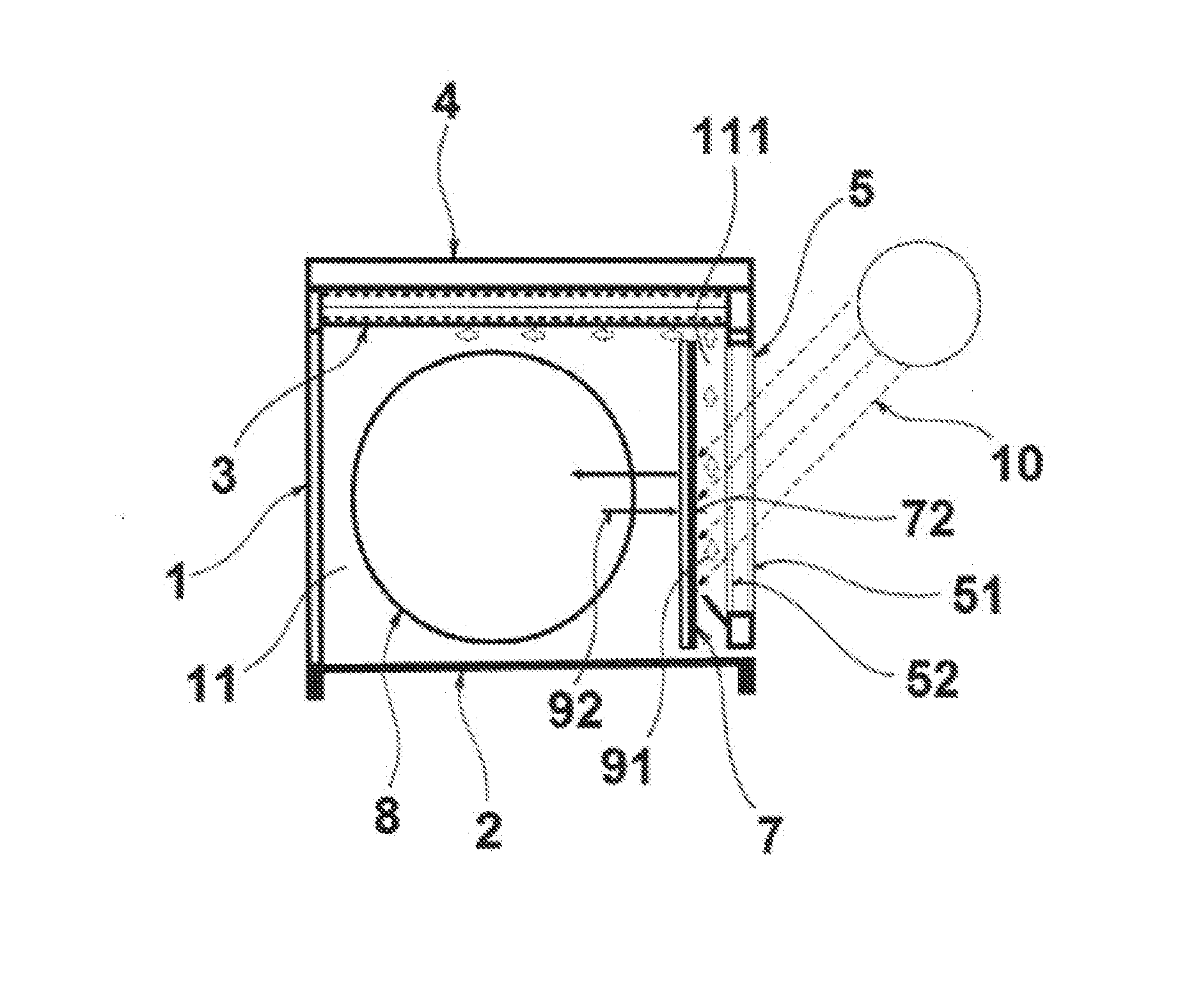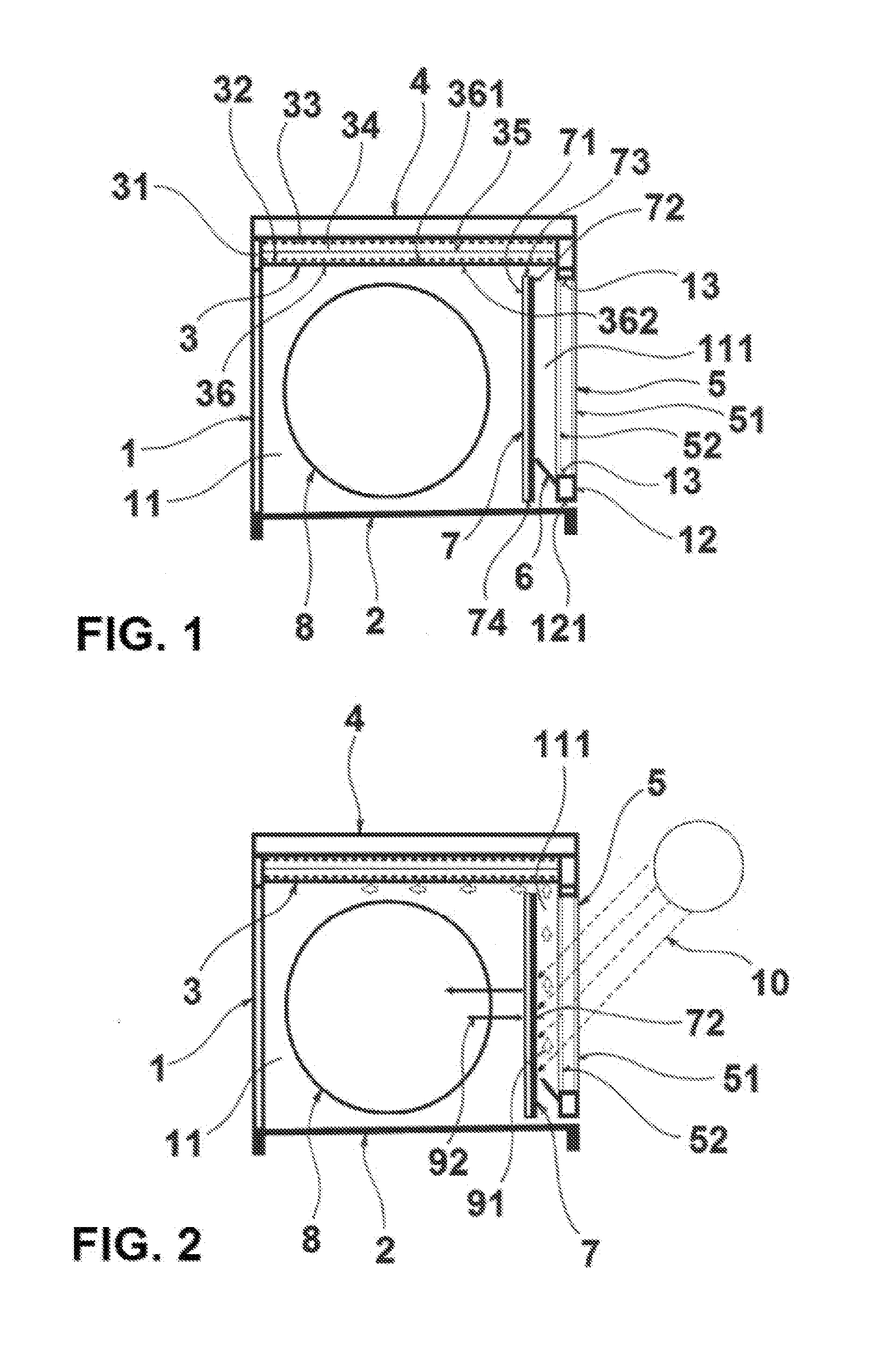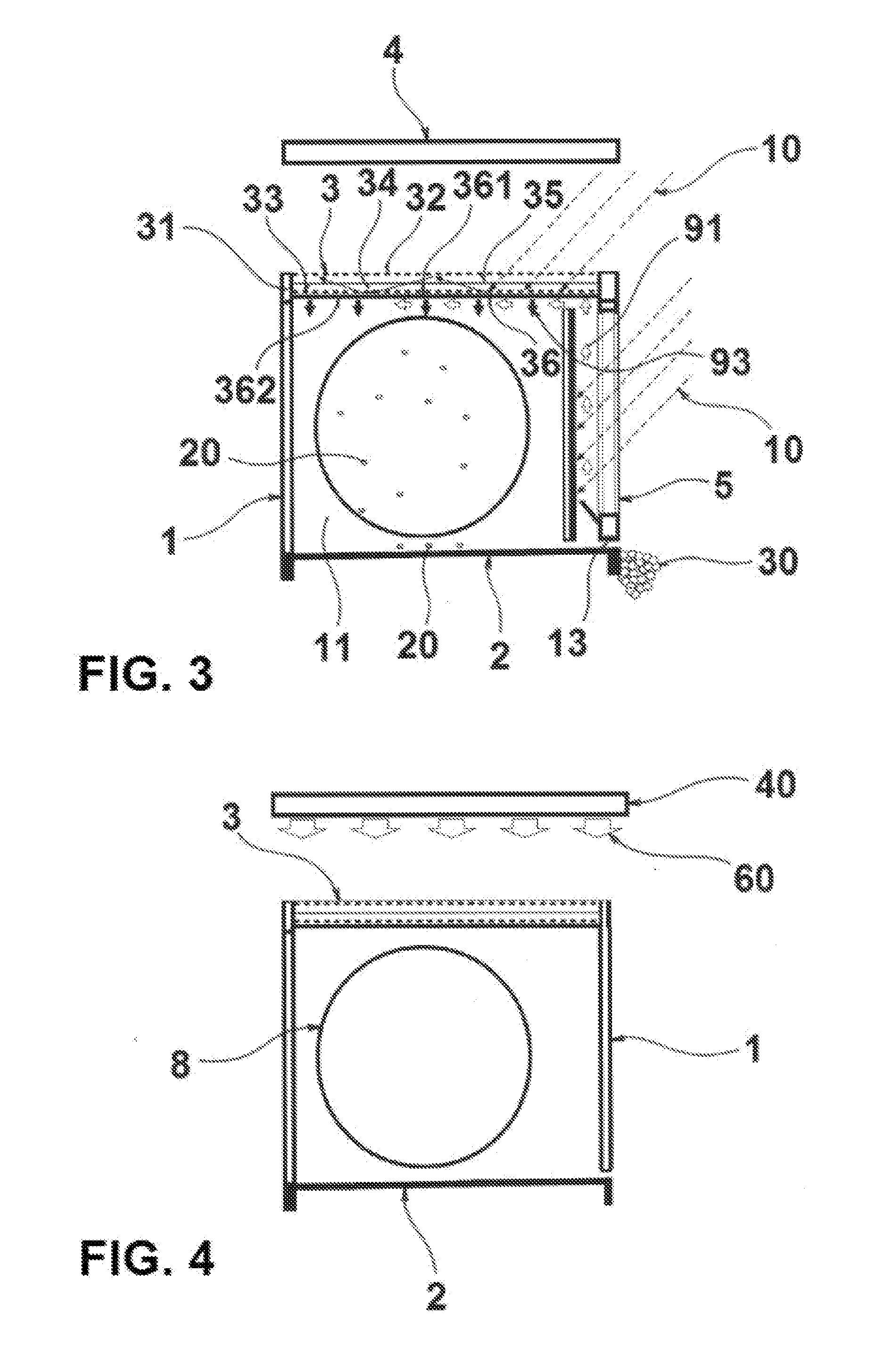Method of a thermal treatment of bee colonies and a device for pursuance of this method
a technology of thermal treatment and bee colonies, which is applied in the field of beekeeping, can solve the problems of affecting the production and operation costs of bees, affecting the health of bees, and presenting significant and difficult-to-solve problems, and achieves the effects of reducing parasites, high efficiency, and low production and operation costs
- Summary
- Abstract
- Description
- Claims
- Application Information
AI Technical Summary
Benefits of technology
Problems solved by technology
Method used
Image
Examples
Embodiment Construction
[0037]The device for pursuance of a thermal treatment of bee colonies illustrated in FIG. 1 is formed by a hive frame superstructure 1 set on a hive bottom 2, whereas to an upper part of the hive frame superstructure 1 adjoins a thermosolar lid 3 realized in the form of a ceiling above which is placed a removable hive cover 4. The hive frame superstructure 1 is from the side of a face board 12 procured partly with an entrance 121 situated by hive bottom 2 and partly with a side way situated insulating gap 13, in which is set a screen 5. The screen 5 is formed by a transparent external and internal screen component 51, 52 realized for example by glass panels, whereas on the transparent internal screen component 52 of the screen 5 is in its lower part fixed a drip 6. In an interior 11 of the hive frame superstructure 1 is a brood nest 8, between it and a face board 12 of the hive frame superstructure 1 is placed a thermo solar frame 7 consisting of an inner thermo insulation layer 71 ...
PUM
 Login to View More
Login to View More Abstract
Description
Claims
Application Information
 Login to View More
Login to View More - R&D
- Intellectual Property
- Life Sciences
- Materials
- Tech Scout
- Unparalleled Data Quality
- Higher Quality Content
- 60% Fewer Hallucinations
Browse by: Latest US Patents, China's latest patents, Technical Efficacy Thesaurus, Application Domain, Technology Topic, Popular Technical Reports.
© 2025 PatSnap. All rights reserved.Legal|Privacy policy|Modern Slavery Act Transparency Statement|Sitemap|About US| Contact US: help@patsnap.com



